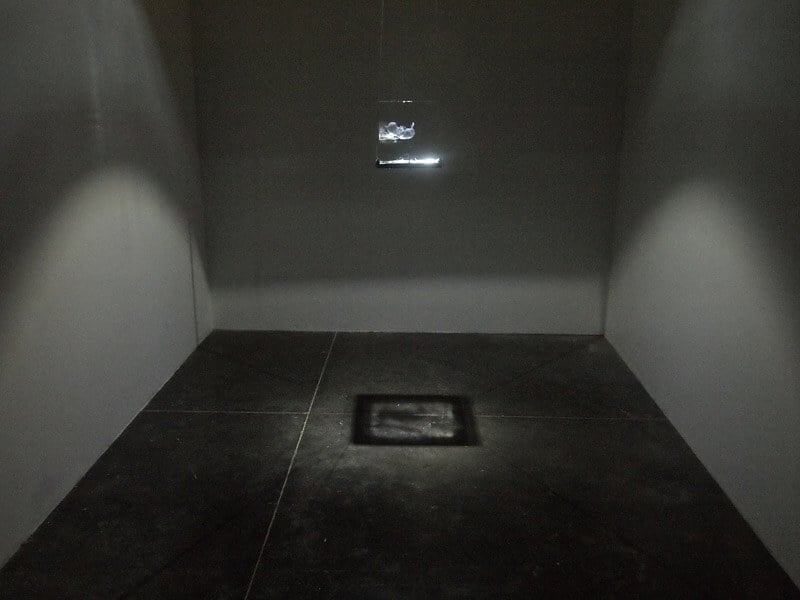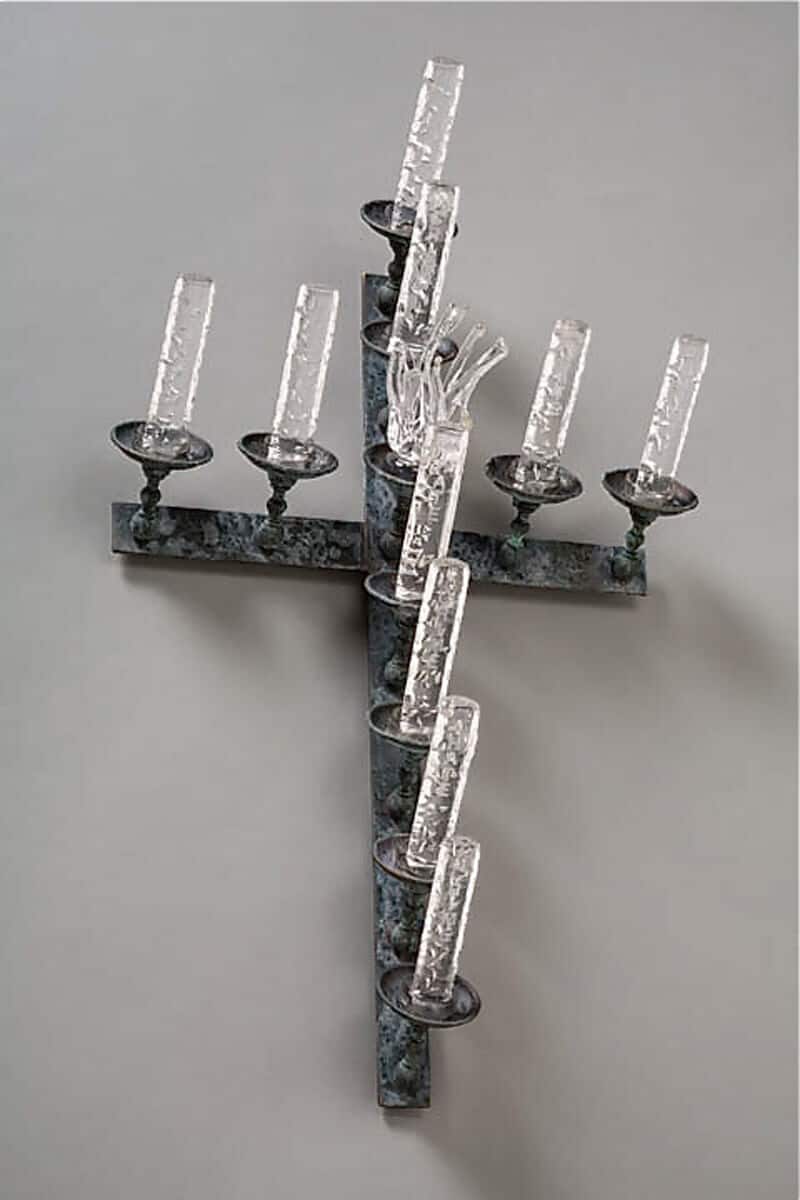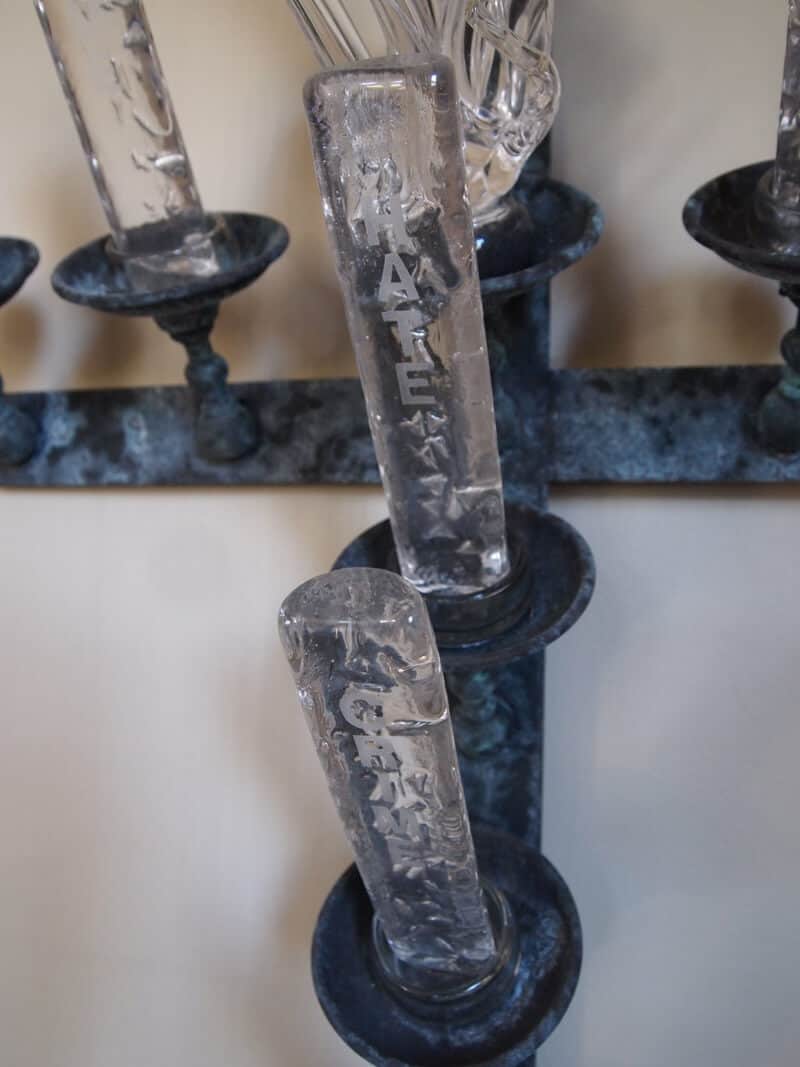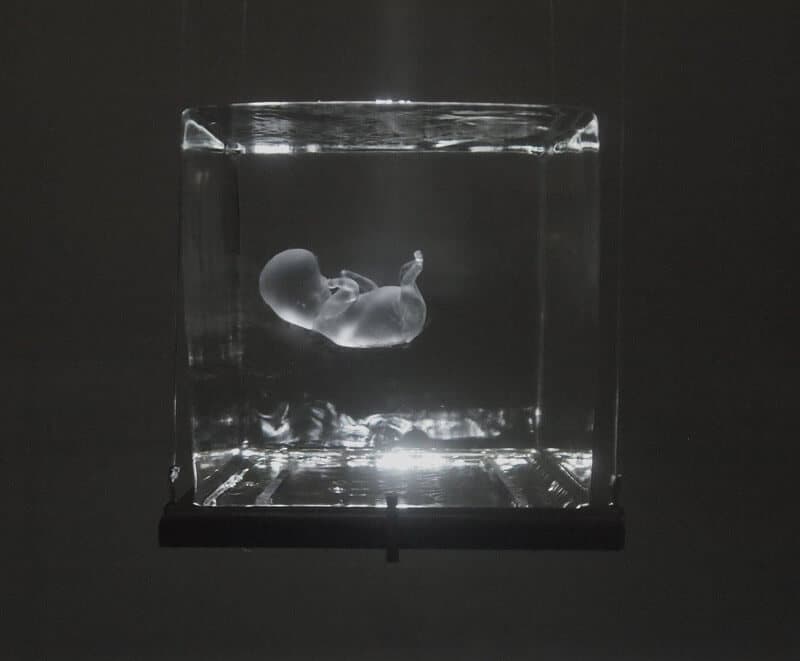After devoting a substantial part of his life as the owner of an advertising and marketing firm in the United States, Eric Hess eventually turned to his passion for art. […]
After devoting a substantial part of his life as the owner of an advertising and marketing firm in the United States, Eric Hess eventually turned to his passion for art. His artwork, “Fragile”, took third place at the prestigious Stanislav Libensky international competition of glass artists who work with glass. The competition was held in Prague.
The name of the work exhibited at DOX Gallery perfectly reflected its essence: a glass human embryo was encased in an ice cube. The cube gradually melted, the whole process was continuously filmed on video. The moment was fixed when the ice finally melted, and the embryo fell to the ground and broke into many fragments. For posterity, thus, only the video remained. Eric was pleased to have been chosen a finalist for this award and never expected to actually win. He was presently surprised to have won third place.
Eric, when and how did you start your exhibition and competitive activities? Your creative resume published on the site is impressive.
What happened was I started to develop my art work with my professor during my study process. We both really liked the work I was doing for my Masters of Arts Thesis. My professor suggested I should enter the work into competitions, and that’s how it began. People responded to my work and as soon as I was able to have it shown at various exhibitions I considered entering international award competitions and the is when I entered the Libensky competition/exhibition. I was also, at the time, having my work shown in several museum exhibitions in the United States.
What kind of medium would you like to try to work with except glass?
Well, I’m already working with metal, wood and steel for the most part. I’ve even projected video into and through glass, so I’m kinda expanding the latter. The thing I really enjoy is the interaction between modern technology and glass. Experimenting with various mediums is key to developing my work.

What does a creative person actually need to do to achieve success? You have to think about it all the time as about your purpose or is it enough to concentrate on creating and let the things flow?
Well, I think that the most important is to be true to your artwork. I produce artwork that is significant to me. I do not concentrate on winning awards or hoping my artwork finds its way into museum collections. Of course, all artists need to market their work and have it seen and exhibited. An artist’s work can be promoted through social media and a website. You have to be in contact with the people that can help you with promoting your work, and of course, you need to enter exhibitions and competitions. I always tell my students that they need to network with other artists and do collaborative works. These are all parts of the process, but in the end I do not think you should change your art in order to win a an award or to be considered for a specific exhibition. I think your artwork should be created first, and then hopefully, it will make its way into exhibitions and competitions.
Do you remember when you took part in your first exhibition? Were you nervous?
I don’t think I was nervous because I’m older. I’ve been doing advertising for years and I’ve had to constantly be presenting proposals to clients. I was also on many non/profit boards and before owning an advertising firm I worked for a television station and was Executive Director of the ballet company in New Orleans, so I don’t really get nervous anymore. The wonderful thing about exhibiting your work is you present your work and you don’t need to talk (laughs). So, the people just come and see your work. I wasn’t really nervous, I was excited because it’s always nice to have people viewed your work and talk about it. It’s always delightful when you can share your work with others.

Do you think that your way in the glass world would be different if you started at the age of 18 for example?
Of course, it would. First of all, if I started it at 18, I would not have had access to the technology that is available today and when I was young the American glass movement was just starting in the North and I would not have had access to even working with glass as an art medium. And museums and the collectors during this time were not considering glass as a fine art and artists would not be able to sell their work or exhibit it.
But speaking about Stanislav Libensky Award – maybe what they should do is to call this event a competition for emerging artists instead of “young artists”, because there was another person in the competition that was near my age. You know, a lot of people go back to school when they get older, so they change careers and go back to get the Master of Fine Arts. Anyway I’m completely happy that I took part in the competition this year.
Do you give any advices to your students?
The first thing I tell them is “Love what you do”. Always create art that you want to create, don’t worry about others who try to direct your creative process. You can take advice about techniques, and learn about other artists, absorb all of that, but in the end you have to be true to yourself and develop artwork that is meaningful to you. I always tell them; don’t create art because you feel this is what the public wants or what collectors want. You should create significant art about what you feel is important. The public’s interest will follow.
I also tell them that it’s very difficult to be an artist. You invest a lot of money in it, and if you are doing it just for money, it becomes more commercial. I do recommend also that they use as many techniques as possible, because with more technique you are able to have less limitations when creating work. Of course, developed a relationship with other artists in the community, because some of them could share their knowledge. All artists have their limitations and we all need to rely on one another.
Is it really so difficult to earn a living as an artist?
Yes it can. I mean I’m lucky in that I owned a marketing and advertising agency and I’m very good in marketing myself, but a lot of artists do not have the training to market their work. I’m also older, I made my money when I was younger, so I can support myself and my career as an artist, but for a lot of people that are younger it is very difficult.
In the United State there is not much support for younger artists, I feel it worse now with the Trump administration. So, all artists are really concerned about what will happen with the arts in the United States, and their seems to be less and less interest in arts. The focus of this Republican administration is more on making money and helping the wealthy. Actually, it’s very interesting, because I don’t remember any president that said – let’s cut the funding from the arts, it was always something we were fighting for. Culture and the arts are what remains after we have left this earth. This expression is what tells future generations who we were as a culture.
So yes, life is quite difficult for artists. I know many friends that have second jobs, or search for artist-in-residence programs or try to find funding. I only hope that in the near future the Democratic Party with take over the Presidency and we as a people will once again start caring about the arts and our environment and work to eliminate racism and hate.

How does the European glass scene differ from the one in the United States?
Well, I think that in European glass scene they are more supportive or artists and they support the arts as a whole. When I look at the collections in many of the European glass galleries and Museums I see a lot of decorative work and I look forward to the day there is more conceptual works. Of course glass arts started in Europe and has a wonderful historical history that is the basis of the work we see today.
Do you think that education really matters when speaking about art or creation? Do you need to be educated in certain fields or id the having talent enough?
I think you can go both ways. I know some incredible artists who did not get an arts degree from a university. they learned on their own and they are very prolific in developing beautiful and significant artworks. I also do not think it is particularly necessary to study, but it allows you to experiment, it allows you to develop technique, and develop process. It gives students an opportunity to really get involved with the community and learn what it means, to be an artist, and how to market yourself. Education is an excellent way to further your abilities as an artist. It also helps you learn how to try different approaches and to critique artwork.
Which Czech glass artists inspired you in your career?
Well, Stanislav Libenský – of course. I love the simplicity of his forms, his play with light and dark. His works are just incredible. He and his wife – they are one of my favorites. There are actually so many glass artists that I like. And people that can capture realism in their work always amaze me.
In one of the interviews you told that with the help of glass you usually express your feelings, emotions and experiences. Did you mean positive or negative ones?
Well, I wouldn’t say just positive or negative… I think that positive and negative is about everything that happens in your life and comes out of it — of what you learn. For example, during my speech at the award Libensky Award ceremony, I was talking about my husband and his fight with cancer, and how I started really thinking about life and fragility and you know, all of these issues. This inspired the work that I created called “Fragile.”
The majority of my works address issues that I deal with. It’s very difficult for me to develop work that isn’t about something I’m dealing with in my life. Most people might consider it as positive or negative, but there is always beauty within the darkness. Sure, there is beauty in a fetus floating in light, but there is also anxiety and the thought of loss once the ice melts and the tiny figure crashes to the ground — the negative aspect. Life is about creating and loss.
Isn’t it difficult to return to these works then?
It’s just an expression, so it doesn’t remind me of the difficult times in my life. It is the same as to be on the other side of the issue, so it does not cause me pain. Developing the work helps me deal with what I am experiencing as a human being. I am not unique. I am like everyone else that experiences loss and love.
One of your works, Hate Crime, is closely connected with the LGBT community issues. How does belonging to this community influence you as an artist?
The work is a cross that has candles on it with the words “Hate Crime.” I was really dealing with this issue that in many religions they say we should love one another and yet these same religions support discrimination against the LGBT community. If you consider it you will see that it was a Hate Crime to kill Christ. In particular we see this with the evangelical religions in the United States in particular.
Being gay does not define me. It is just what I am. I think the experiences I have had as a gay man has influenced my work when I am creating work that deals with this issue.
Author: Nina Johnson
Photos: Eric Hess
Support us!
All your donations will be used to pay the magazine’s journalists and to support the ongoing costs of maintaining the site.
Share this post
Interested in co-operating with us?
We are open to co-operation from writers and businesses alike. You can reach us on our email at [email protected]/[email protected] and we will get back to you as quick as we can.









